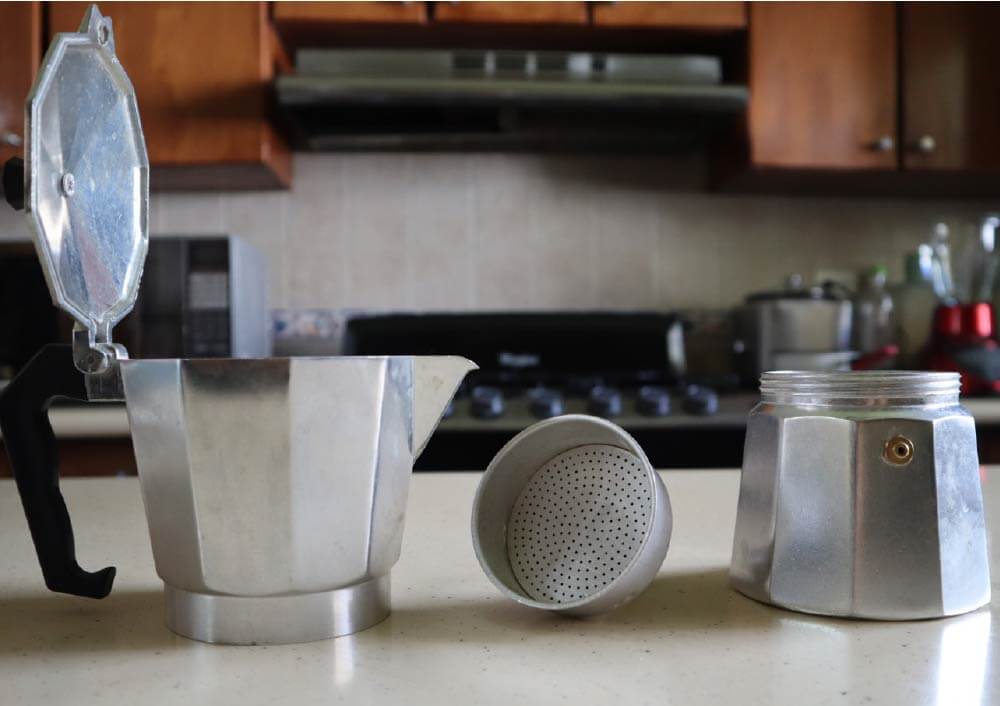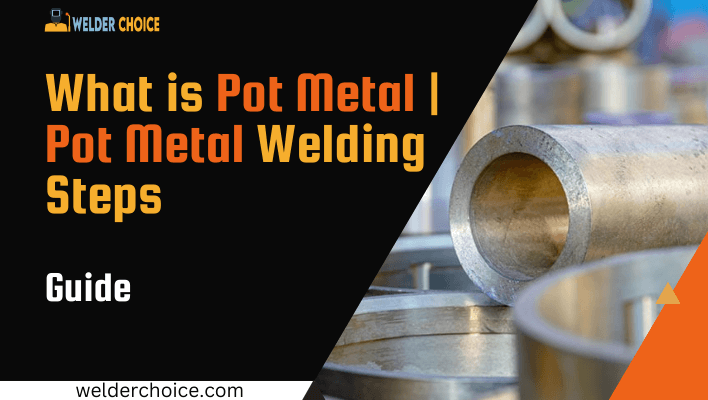Many people have confusion about Pot Metal and Pot Metal Welding, Lets Discuss
The word “pot metal” is frequently used in the manufacturing sector. Some people even like to call it “white metal” or “monkey metal”.
Whatever name you choose, it is a type of cheap metal that is frequently used to create low-cost castings.
But if you didn’t have some inquiries regarding pot metal welding, you wouldn’t be here. Today, we address some frequently asked questions and solution some myths regarding pot metal.
What Is Pot Metal?
Pot metal, often known as monkey metal or even die-cast zinc, is a colloquial name for low-quality, inexpensive metals with a low melting point. It typically contains copper, tin, lead, and aluminum. Zinc, iron, cadmium, and magnesium are among the additional elements that can be found in pot metal.

The name “pot metal” comes from the automotive industry of the early 20th century, which used a variety of die-cast metals—basically a blend of several alloys—and melted them down in a pot.
The resulting cast items are created from melted scrap metal. While pot metal does contain a number of different metals, zinc makes up the majority of it. The properties of each metal are altered after being melted together with the other metals. The end result, or the monkey metal that results from it, has a low melting point as a result of this.
Pot Metal is Magnetic or Not?
Is pot metal magnetic? is one of the best questions to ask about this material. Workers in the automobile sector collected a large quantity of non-ferrous metal scraps and melted them together in a chamber to produce this sort of metal pot.
Although many other kinds of metals are present, zinc, which is not magnetic, is the base metal. There is also some iron mixed throughout, which is often only present in trace amounts in pot metal due to its higher melting point. Pot metal will not adhere to a magnet due to the trace amounts of iron it contains.
Advantages of Pot Metal
Due to pot metal’s low melting point, repairs might be quite difficult. Therefore, it requires a lot of care to repair or weld these materials. But occasionally you’ll need to finish some things in a mold. When it comes to this, pot metal is useful.
The main advantages of pot metal are as follows:
- Materials made of mixed alloys are portable and light.
- Pot metals require less heat and oxidize more quickly because they are less volatile.
- Mixed alloys enable the welding of a wide range of materials.
- Making things into molds is made considerably simpler by pot metal welding.
- It stands for one of the great strategies for keeping scrap metal safe.
- To weld or repair pot metal, you don’t require sophisticated tools.
The Usage of Pot Metal
Pot metal is utilized to create objects that aren’t as exposed to the weather and doesn’t age well. However, it still has a number of practical uses.
Domestic use: It is a term used to describe a wide range of household items. For instance, it is used to make toys, boxes, and cookie cutters. Additionally, you can find it in low-cost furniture fixtures.
Electronics and accessories: Automotive window cranks were traditionally made of pot metal before contemporary, electric windows became a thing. It can also be found in jewelry.
Identifying Pot Metals
Finding a pot metal composition might be challenging. Literally, it is a bonding of many materials together. It is simple to mistake it for the raw metal that was used to make it.
Due to the lack of clarity, pot metal repair may not go so well if you try to handle the metal the same way you would handle its main component. The best course of action in this situation is to heat the metal and test it. You may then calculate how much heat needs to be applied.
Pot metal is the leftover scrap metal from vehicle repair companies. It is used as a repair after being melted in a pot. These waste metals’ low melting points make melting them a simple task. Even though welding stainless steel is tough, this is challenging in a different way.
Lead, Copper, Iron, Aluminum, Cadmium, and Zinc are among the constituents of this pot metal (which is usually the metal that constitutes the most part.)
Because pot metal carries the physical nature of its ingredient which is of the highest composition when it comes to measurement, identifying pot metal might be difficult.
It’s possible that a pot metal will appear to be another metal when you spot it, especially if it includes a very high proportion of that component. You must look at its special characteristics if you wish to detect it successfully. The simplest way to accomplish it so that you can weld it quickly is to do it that way.
Weighing the metal is another method of detecting pot metal. A method of determining if a metal is a die-cast or not is to weigh the metals. Keep in mind that pot metal normally has a higher weight than aluminum, so if you are familiar with aluminum you can readily tell the difference between the two.
Pot metal shares some characteristics with aluminum, but the finishing often leaves a pattern on it that isn’t present in aluminum. Watch cautiously for some darker spots in its finishing in other instances.
Pot Metal Welding?
Because you may never be certain of the precise makeup of an alloy, welding pot metal can be challenging. For instance, it is highly challenging to weld or repair pot metal with aluminum. On the other hand, it can be somewhat risky to fix pot metal that contains a lot of zinc.
Welding pot metal can be lucky since it has a low melting point. If your welding machine generates too much heat, it’s simple to make a mistake and melt the metal. Welders should better fuse pot metal metals and fix them in this way rather than attempting to weld them together as a result.
How to Weld Pot Metal
Due to their poor quality, welding or soldering pot metal components is really challenging. Welders will frequently make mistakes because they won’t react the same way as typical metals do. You can move in the wrong direction and end up in trouble.
Turn the temperature down on your welder. I recommend 80 amps. A wire brush may also be required to scrub the weld area clean. Select the appropriate filler rod. The ideal rod has a melting point of 400° to 500° F. Additionally, good rods stop poor welds.
Purchase a pot metal refinishing kit from a nearby store. Use non-corrosive flux when welding pot pieces with a TIG procedure. When fixing pot metal, a TIG welder can be used with zinc aluminum brazing rods. This substance doesn’t have a strong tensile capacity. Your work can easily be ruined by excessive heat. It is preferable to give aluminum-containing metal components around 10 seconds to cool down after finishing them.
Steps for Pot Metal Welding
Here are some recommendations that you may find useful before you weld a pot metal:
- Prepare the steel metal and set up the welding station.
- Wear protective clothing, such as your welding coat, TIG gloves, knee pads and welding helmet.
- Use the appropriate alloy welding rod.
- To produce a focused, tiny arc, grind the tungsten super alloy rod’s tip.
- By taking out the screw on the electrode holder’s back, you can insert the electrode into the medium.
- Use the appropriate penetrating and electrical choices.
- To avoid the weld rusting or oxidizing, set the air settings to around five seconds.
- To let the die-cast zinc to regain its strength and appealing appearance, set your amps at about 80 maximum.
- Activate the gas.
- Check to see if the electrode can move freely.
- As you start to weld, make sure the electrode is about an inch or so away from the metal’s surface.
Conclusion
This kind of metal is pot metal, Although you rarely see it used for important work, someone might decide to do so on occasion. Due to the fact that it is a mixed bag, soldering, and welding can be rather challenging.
As a result, using a pot metal restoration kit for pot metal repair is occasionally preferable. In conclusion, you better have a strong purpose for working with this kind of metal if you don’t want to have a long night.
FAQs

With 8 years of experience a senior welding instructor and safety equipment researcher and writes articles, reviews and guidelines on helmets and other welding and safety gears at Welder Choice, and other written works have been published in various publications.
